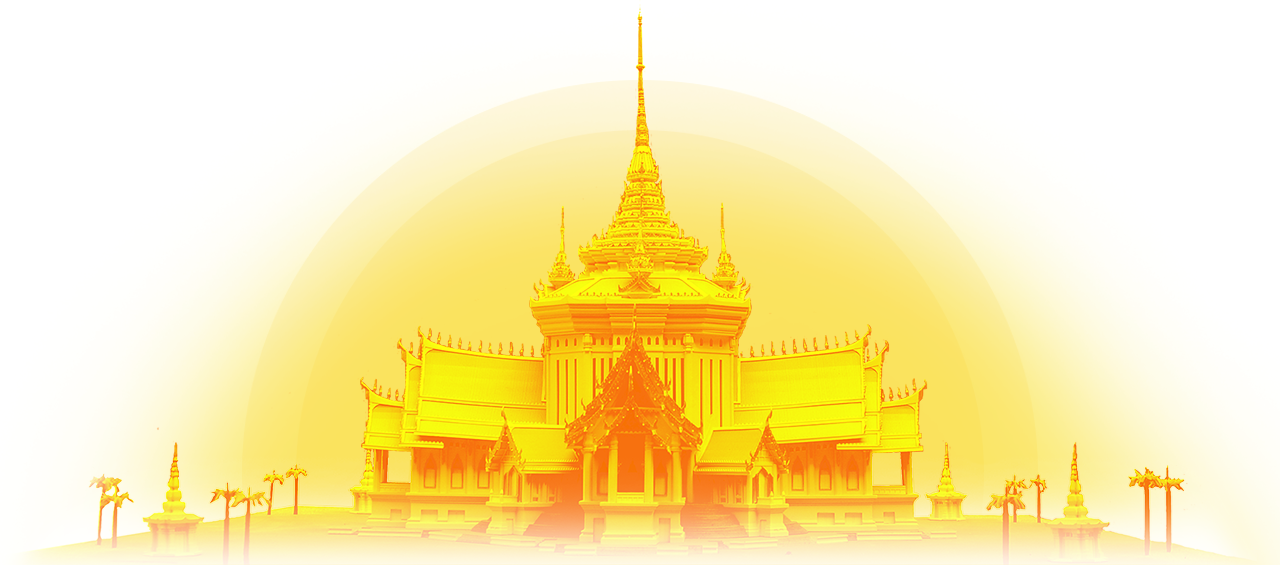- Home
- Meditation
- Samatha Meditation
What is samatha meditation?
Meditation by concentrating the mind is known as samatha (serenity) or concentraion meditation. The word ‘samatha’ means making the mind calm or tranquil, free from the five hindrances. The word ‘bhāvanā’ means mental development. The word ‘kammatthāna’ means meditation exercises or the act of meditating or contemplating. Thus, samatha-bhāvanā and samatha-kammatthāna both have the same meaning, eliminating the five hindrances in order to purify the mind.
Forty meditation subjects
Lord Buddha taught forty meditation subjects or concentration devices for tranquilizing the mind (Buddhaghosa, The Path of Purification or Visuddhimagga). Those Forty Meditation Subjects are:
- Ten kasina [kasina means a meditation object],
- Ten meditations on corpses (asubha),
- Six recollections (anussati),
- Mindfulness of death (maranassati),
- Mindfulness of body or contemplation on the 32 impure parts of the body (kayagatasati),
- Mindfulness of breathing (anapanasati),
- Recollection of nibbana or contemplation on the virtue of nibbana (anussati),
- Four divine abidings or sublime states of mind (brahmavihara),
- Four arupa jhanas or the absorptions of the formelss spheres,
- Perception of the loathsomeness of food (aharepatikulasanna),
- Analysis of the four elements (catudhatu-vavatthana)
A pactitioner can select any one or combination of these forty meditation subjects, according to his or her own character. For example, Kasina concentration is very suitable for those with sensual desire, restlessness of mind, or inclination toward anger, hatred or ill will. For those whose habits are intellectual thought, devotion or delusion, mindfulness of breathing (anapanasati) and recollection of Buddha’s virtues (buddhunussati) are most suitable.
What are the Three Trainings?
The Three Trainings are (1) Training in morality or sila, (2) Training in mentality or samatha meditation, and (3) Training in Wisdom (pañña) or vipassana meditation. Training in mentality is developing samatha meditation and training in wisdom is developing Vipassana Meditation. They can be summarized into the following based on the noble eightfold path:
1. Right view or right understanding (samma-ditthi), 2. Right Thought (samma-sankappa) -- Training in wisdom or vipassana meditation,
3. Right speech (samma-vaca), 4. Right action (samma-kammanta), 5. Right livelihood (samma-ajiva) -- Training in morality or sila and,
6. Right effort (samma-vayama), 7. Right mindfulness (samma-sati) and 8. Right concentration (samma-samadhi) -- Training in mentality or samatha meditation.
What is the right practice of samatha meditation?
Samatha meditation covers three of the eight factors of the noble eightfold path: (1) right effort (samma-vayama), (2) right mindfulness (samma-sati), and (3) right concentration (samma-samathi).
Right effort (samma-vayama) is defined as four exertions:
- The first effort is to prevent the arising of new bad habits, that is, bad actions, speech or thought. Examples of bad actions are intentionally killing living beings, stealing or cheating, sexual misconduct, wrong livelihood, addiction to intoxicants, gambling, and excessive hedonism. Examples of bad speech are lying, backbiting, coarse language and gossiping. Examples of bad thoughts include evil intentions, greed, lust, hot temperedness, hatred, and deluded thinking or holding erroneous beliefs.
- The second effort is the exertion to abandon bad habits, such as these, which have already arisen.
- The third effort is to develop new good habits, that is good actions, speech, and thoughts. Good actions are the opposites of bad actions. For example, treating other beings with sympathy and mercy, generous benevolence, loyalty to one’s spouse, right occupation, clear-headed concentration, and alert awareness of what is good and bad.
- The fourth effort is to maintain good habits which have already arisen, such as those just mentioned.
Right Mindfulness (samma-sati) is defined as the four foundations of mindfulness (sati-patthana): successive inner perception (anupassana) and contemplation of body, feelings, mentality, and dhamma. The Greater Discourse on the Foundations of Mindfulness (the Mahasatipatthana Sutta in the Digha Nikaya) is Lord Buddha’s main sermon on meditation.
It lists six methods for mindfulness of the body: mindfulness of breathing, posture, and actions; Contemplation of body parts as repulsive and as just elements – water, earth, fire or wind; and, nine meditations on corpses, considering that this body too, will become like that. The meditator continues contemplating the body-in-the-body both internally and externally along with the arising and vanishing of phenomena in the body. He remains detached, being aware that there is body, without any clinging.
Similarly, the meditator perceives and contemplates the feelings-in-the-feelings as pleasant, painful or neutral, without any clinging.
Then, the meditator perceives and contemplates the mind-in-the-mind as lustful, hateful, deluded, distracted, developed, unsurpassed, concentrated, liberated, or the opposites of these states, without any clinging.
Finally, the meditator perceives and contemplates the dhamma-in-the-dhamma, specifically: (1) the Five Hindrances; (2) the Five Aggregates; (3) the Six Sense Organs and their sense-objects; (4) the Seven Factors of Enlightenment; and (5) the Four Noble Truths. Lord Buddha concludes, the Four Foundations of Mindfulness are the one way street to the purification of beings for overcoming sorrow and distress and gaining the right path for the realization of Nirvana.
Finally, right concentration (samma-samadhi) is defined as developing the four rupa-jhanas or states of absorption, going deeper and deeper inside to purify the mind from the five hindrances, which obscure clear-sightedness, to transform the normal human senses into powerful instruments of observation, enabling the necessary and sufficient, reliable and valid collection of the relevant data required for direct, lucid comprehension of the true nature of reality. Prince Siddhattha intuitively meditated to the first jhana when he was only seven years old. Later, when he recognized the futility of seeking enlightenment through self-torture, this memory led him onto the correct path.
Mental signs & stages
Mental Signs
- The preliminary sign (parikamma-nimitta) is mentally constructed such as by visualizing meditation objects or mentally and verbally reciting Lord Buddha’s virtues etc. The preliminary sign signifies momentary concentration (khanika-samādhi) and can be attained with all types of meditation.
- The learning sign (upacāra-samādhi) is a sign that lasts longer. While opening and closing the eyes, the meditator can recall the sign accurately. The learning sign is also called the visualized image. The learning sign signifi es access concentration and can be attained with all types of meditation.
- The counterpart sign (patibhāga-nimitta) is stable for a long period, fixed in the eye and mind and can be made bigger or smaller. The counterpart sign signifies attainment concentration (appanā-samādhi) and can be attained by twenty two types of meditation: the ten kasinas, the ten meditations on corpses (asubha), mindfulness of the body (kāyagatāsati) and mindfulness of breathing (ānāpānasati).
Three Stages of Meditation
- Preliminary meditation (parikamma-bhāvanā) is visualizing a sign (nimitta) or mentally reciting Lord Buddha’s virtues etc. Preliminary Meditation can be attained with all types of meditation.
- The Proximate meditation (upacāra-bhāvanā) is attaining the learning sign due to contemplating a meditation object, as a result the five hindrances are calmed. Proximate meditation can be attained through ten types of meditation: Eight recollections [excluding mindfulness of the body and mindfulness of breathing], contemplation of the four element kasinas and contemplation of the loathsomeness of food.
- The attainment meditation (appanā-bhāvanā) is attaining jhāna due to developing the learning sign. Attainment Meditation can be reached with thirty types of meditation. These thirty types of meditation can help meditators achieve attainment meditation (appanā-bhāvanā) in some form.
What are hindrances and causes?
Samatha meditation controls the five hindrances by overcoming each with a counteracting jhāna or absorption factor developed by focusing inside [internally], meditating into peacefully happy trance states. First, let’s understand the five hindrances.
The five hindrances are the obstacles which block or cut off the mind from transcending to wisdom. As shown below, they are drowsiness, doubt, ill will, restlessness and sensual desire.
The following are the hindrance definitions:
- Drowsiness (thīna-middha): sleepiness, drowsiness, laziness, sloth, torpor, languor, stolidity,
- Doubt (vicikicchā): doubt, perplexity, scepticism, indecision, uncertainty,
- Ill Will (byāpāda): ill will, hatred, malevolence, aversion.
- Restlessness (uddhacca-kukkucca): Agitation, worry, anxiety,
- Sensual Desire (kāma-chanda): Sensual desire in fi ve sensual objects which consists of sights, sounds, smells, tastes and touch.
Drowsiness can be caused either by sleepiness or laziness. It includes both mental sluggishness (sloth) and physical sluggishness (torpor). Doubt is usually specifi c to the current meditation procedure, “Am I doing the right thing?” Ill Will can vary from active anger or hatred to simply feeling ill at ease, “Do I really belong here?” Restlessness is usually the familiar racing and fl eeting of the mind from one thought to another, but can also include specifi c worries and anxiety. Finally, Sensual Desire is the enveloping sea that encompasses all the others. We are born into this world of sensual desire because of our enchantment with seeking sensual pleasures. In combination, these Five Hindrances do a good job of confusing our normal thinking and obscuring the true nature of our situation.
What are the causes of the five hindrances?
- Drowsiness caused by dislike, discontent or aversion (arati),
- Doubt or Uncertainty caused by lack of contemplation (ayonisomanasikāra),
- Ill Will caused by annoyance, anger, hatred, enmity, repulsion, or repugnance (patigha),
- Restlessness caused by being unable to stop the mind from mental distraction or anxiety, lack of peace (cetasoavūpasama).
- Sensual Desire caused by lust or craving for beautiful, pleasing perceptions (subhasaññā).
As shown, drowsiness stems from dislike or discontentment. Doubt comes from lack of contemplation. Ill Will may be due to superficial annoyance, but often refl ects more deeply instilled feelings of anger or hatred. Restlessness indicates our habitual inability to stop the mind due to failure to be able to tune out distractions. However, it can be overcome with mental training. Sensual Desire is caused by the lust and craving for pleasure which pervades our whole approach to life. It is the most deep-seated hindrance and the ultimate target of mental training.
Jhana virtues eliminating hindrances
The normal human mind is blurred by five hindrances.The five hindrances, are sleepiness or laziness (thina-middha), doubt (vicikiccha), ill will (byapada), restlessness or worry (uddhacca-kukkucca), and sensual desire (kamachanda). As the meditator approaches absorption, he or she perceives spontaneous nimitta or signs of progress which are the tools of jhana. First, the meditator perceives parikamma-nimitta or preliminary signs, signifying temporary or weak (khanika) concentration. With practice, these develop into an intermediate sign or Uggaha-Nimitta, when the sphere lasts for a short time. This signifies substantial or Upacara Samadhi, which is already getting close to stable concentration. Finally, when the mind is permanently in the Nimitta, the meditator comes to perceive the the Counterpart Sign (Patibhaga-nimitta), signifying permanent concentration. At this stage, the meditator can control the Nimitta (a mental image or meditation sign), moving it and changing its size.
At this point, the mind develops the five jhana virtues, each of which purifies the mind of the corresponding hindrance. The jhana virtues are applied thought or attention (vitakka) which purifies drowsiness or laziness; Sustained thought or contemplation (vicara) which purifies doubt; Joy or rapture (Piti) which purifies hatred or ill will; Peaceful happiness (sukha) which purifies restlessness or worry; and One-pointed concentration (ekaggata) which purifies sensual desire or enchantment. These five jhana virtues all develop together quickly by the first jhana level. Applied thought begins with the learning sign (uggaha-nimitta), and the rest follow quickly with the counterpart sign (patibhaga-nimitta).
When concentration and absorption or jhana develop further to the point where the mind no longer pays attention to either applied or sustained thought, the meditator ascends into the second jhana, where only Joy, happiness and one-pointed concentration remain active. Next, with further concentration and absorption, the mind no longer pays attention to joy, and the meditator rises into the third jhana with only happiness and one-pointed concentration. Thereafter, with further concentration and absorption, the mind no longer pays attention to happiness, and there remains only one-pointed concentration, which is joined by a new virtue, equanimity – neither happiness nor suffering. This is the fourth jhana.
How does samatha meditation practice prepare the meditator for vipassana meditation?
At the noble disciple level, samatha and vipassana meditation already begin to merge. The meditator develops super normal tools for effective and efficient vipassana meditation. These powers or abhiñña such as the angel eye and angel ear, enable one to perceive the most refined beings and phenomena of the universe, which are transparent to the human eye and beyond the range of the human ear. One also develops the mental microscope and the mental telescope which enable seeing the whole universe and beyond to Nirvana. These are the tools which facilitate samatha-vipassana meditation and enable one to follow Lord Buddha’s development of the three vijja (transcendental knowledge) which he attained on enlightenment night.
The benefits of right concentration
Right Concentration (sammā-samādhi) develops supra-mundane knowledge (vijjā) and wisdom (paññā). Practicing samatha meditation, training the mind to stop still firmly concentrated to attain the jhānas, from the first jhāna to the fourth jhāna, suppresses the Five Hindrances. This is the first step towards the transcendental knowledge that eliminates ignorance (avijjā), the root cause underlying all suffering. It makes the mind clear and ready for the task of developing transcendental knowledge and wisdom to penetrate the four noble truths. This is called Right Concentration, one component of the noble eightfold path.
The following are Lord Buddha’s descriptions of the threefold knowledge (vijjā) for which jhāna attainment provides the foundation. These states permit overcoming ignorance and penetrating the Four Noble Truths:
"[Knowledge of Past Lives]: Monks, when his mind is concentrated, purified, clear, without defilement, without mental depravity, gentle, workable, fi rm and steady, he will direct his mind to pubbenivāsānussatiñāna [knowledge of past lives]. He is recalling where he used to live in the past, in one birth, two births, ... many lives which used to be including ākāra [such as appearance, manner countenance, cause, reason, purpose] and uddesa [such as name, parents].
Just as a man goes from his own house to another, from that house to others and back to his own house again. He recollects that he went from his own house to that house, in that house, how he stood, sat, spoke, became silent, and went from that house to another. Then, he went from that house to others again.
Monks, thus, he recollects his past lives, one birth, two births ... many lives which used to be including ākāra [such as appearance, manner countenance, cause, reason, purpose] and uddesa [such as name, parents
[Knowledge of Decease and Rebirth of Beings]: Monks, when his mind is concentrated, purified, clear, without defilement, without mental depravity, gentle, workable, fi rm, and steady, he will direct his mind to cutūpapātañāna (knowledge of decease and rebirth of beings): He sees beings passing away, being reborn, inferior, refined, of good complexion, crude complexion, fortunate, misfortunate with the pure divine eyes which are beyond human eyes ... he understands beings depending on kamma (karma).
Just as in a castle at the four-way intersection in the middle of a city. A man with good sight standing upon the castle can see humans going to a house, leaving a house, walking, coming and traveling. Like that a monk sees beings passing away, being reborn, inferior, refi ned, of good complexion, crude complexion, fortunate, misfortunate with the pure divine eyes which are beyond human eyes ... he understands beings depending on kamma.
[Knowledge of Destruction of Mental Intoxications]: Monks, when his mind is concentrated, purified, clear, without defilement, without mental depravity, gentle, workable, fi rm, and steady, he will direct his mind to āsavakkhayañāna (knowledge of destruction of mental intoxications). He penetrates to find that this is suffering (dukkhya), this is the cause of suffering (samudaya), this is the cessation of suffering (nirodha), this is the Path leading to the cessation of suffering (magga). These are mental intoxications (āsava). This is a cause of mental intoxications. This is the cessation of mental intoxications. This is the path leading to the cessation of mental intoxications. When he penetrates this, his mind is emancipated from āsava of sense-desire, āsava of becoming and āsava of ignorance. When his mind has been emancipated, there will be the knowledge that this is emancipation. Birth ends. The chaste life is over. The obligation has been done. There is no more obligation.
Just as at mountain pool, with pure and limpidwater, a man with good eyes who stands at the edge of the pool of water can see oyster shells, pebbles, tiles and fi sh which stop or move. He thinks that in the pool of water with pure and limpid-water, there are oyster shells, pebbles, tiles and fish which stop or move. This is the same as the monk who penetrates that this is suffering, this is the cause of suffering, ... He will know that rebirth ends. The chaste life is over. The obligation has been done. There is no more obligation. He has done what must be done" (Majjhima-nikaya 12/475-477/414-415).
The Benefits of Right Concentration
With this threefold knowledge, the meditator can overcome ignorance, penetrate the four noble truths completely, and attain transcendental wisdom.
Lord Buddha said the benefits of Right Concentration are: "There is no jhāna (absorption factors) for one who is without wisdom and no wisdom for one who is without jhāna. He who has both jhāna and wisdom is, indeed, close to Nibbāna" (Khuddaka-nikaya 25/35/65).




